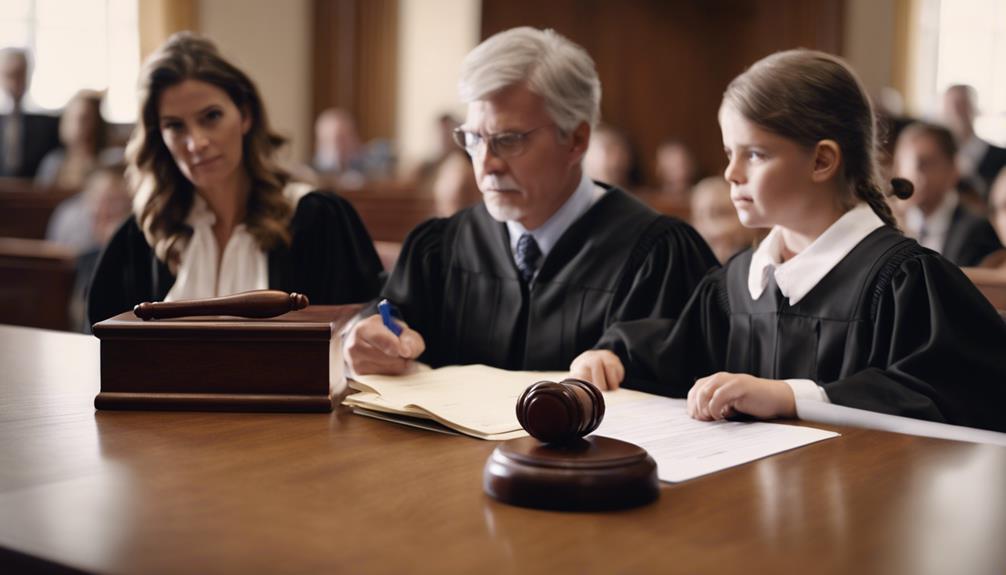To split a friend group without drama, be honest and respectful in your conversations. Use calm tone and active listening, giving everyone a chance to share their feelings. Focus on shared goals like preserving respect and friendship, and explain your reasons clearly using “I” statements. Anticipate reactions and respond with empathy, setting boundaries as needed. By approaching the situation thoughtfully, you can help everyone move forward positively; more helpful strategies await if you look further.
Key Takeaways
- Prepare honest, respectful messages emphasizing shared goals and well-being.
- Use “I” statements to express feelings without assigning blame.
- Listen actively, acknowledge others’ feelings, and show empathy during discussions.
- Set clear boundaries and offer solutions like reduced contact if needed.
- Maintain calm, open dialogue to foster understanding and minimize misunderstandings.

Breaking up a friend group doesn’t have to be messy or emotional. When you approach the situation with clear communication and a focus on conflict resolution, you can navigate the split smoothly. The key is to prioritize honest, respectful conversations that address everyone’s feelings while avoiding unnecessary drama. Good group communication means being transparent about your reasons for wanting to part ways or redefine the group dynamic. It’s important to set a calm tone and listen actively, giving each person space to express their perspective without interruption or judgment. This openness helps prevent misunderstandings and fosters mutual respect, even if opinions differ.
Open communication and respect help navigate friend group splits smoothly and without unnecessary drama.
Before initiating the conversation, think about what you want to say and how to say it constructively. Use “I” statements to explain your feelings, such as “I’ve been feeling like I need some space,” rather than blaming others. This approach reduces defensiveness and encourages a more productive dialogue. When discussing the split, focus on the common goal of maintaining respect and friendship, even if the group no longer functions as it once did. Emphasize that the decision isn’t about personal attacks but about what’s best for everyone’s well-being.
Conflict resolution plays a vital role in preventing the situation from escalating. Know that disagreements may happen, but handling them calmly and thoughtfully can prevent lasting damage. If tensions rise, take a step back to breathe and revisit the conversation later, when everyone is calmer. Offer solutions that work for everyone involved, such as spending less time together or redefining the group’s focus. Remember, it’s okay to set boundaries and prioritize your mental health. Sometimes, the best outcome is a respectful, amicable separation rather than forced interactions.
It’s also helpful to prepare for different reactions. Some friends may feel hurt or confused, while others might be indifferent. Show empathy by acknowledging their feelings and clarifying that your decision is not meant to hurt them, but to align with your current needs. Throughout this process, maintain a focus on honest communication and effective conflict resolution techniques. This way, you minimize misunderstandings and preserve dignity for everyone involved. Ending a friendship group is rarely easy, but with thoughtful, transparent conversations, you can do so without unnecessary drama. Ultimately, handling the split with respect and clear communication allows everyone to move forward more positively, even if it’s a little uncomfortable at first.
Furthermore, understanding the importance of color accuracy and its influence on the visual experience can help you appreciate the nuances of maintaining harmony in your relationships, just as it enhances image quality in projectors.
Frequently Asked Questions
How Can I Prevent Hurt Feelings During the Split?
When splitting a friend group, you want to prevent hurt feelings. You can do this by setting clear communication boundaries and being honest about your feelings. Make sure you’re emotionally prepared before the conversation, so you stay calm and respectful. Listen actively, show empathy, and avoid blame. By being transparent and considerate, you help everyone understand the reasons, making the split less painful and more respectful for all involved.
What Are Signs of Impending Friendship Conflicts?
Like a ship maneuvering through rough seas, you can spot signs of impending friendship conflicts by observing group dynamics and emotional boundaries. If friends start withdrawing, show less interest, or react defensively, it signals trouble ahead. Tensions can build quietly, so stay attentive to subtle shifts in behavior. Recognizing these signs early allows you to address issues calmly, preventing misunderstandings from escalating into larger conflicts.
How to Handle Mutual Friends Who Choose Sides?
When mutual friends choose sides, you need to focus on maintaining group loyalty and practicing conflict resolution. Talk openly with them, listen without judgment, and avoid taking sides yourself. Encourage them to see the bigger picture and remind everyone of common bonds. By fostering honest communication and understanding, you can help resolve tensions and keep the group united, preventing drama from escalating further.
Is It Better to Split the Group or Individual Friendships?
Did you know that 60% of friendships survive group splits? When considering whether to split the group or individual friendships, think about group dynamics and friendship boundaries. You might find that maintaining individual relationships allows for healthier, less complicated connections. Splitting the group can sometimes create drama, so weigh the impact on everyone involved. Ultimately, prioritizing open communication helps preserve friendships without unnecessary conflict or division.
How Do I Rebuild Trust After a Difficult Split?
When rebuilding trust after a tough split, focus on honest communication and consistent actions. You should start with sincere apology strategies, acknowledging what went wrong without excuses. Show through your words and deeds that you’re committed to change. Be patient, listen actively, and give the other person space if needed. Trust rebuilds gradually, but your genuine efforts will demonstrate your intent to mend the relationship.
Conclusion
Finding your way through a friend group split without drama is like steering a ship through calm waters—you stay steady, communicate clearly, and respect everyone’s feelings. By choosing honesty over silence and kindness over conflict, you prevent storms from brewing. Remember, friendships are like delicate glass—handle them gently, and they can shine brighter even after breaking. With patience and compassion, you’ll find your way to peaceful shores, turning what feels like an ending into a new beginning.










